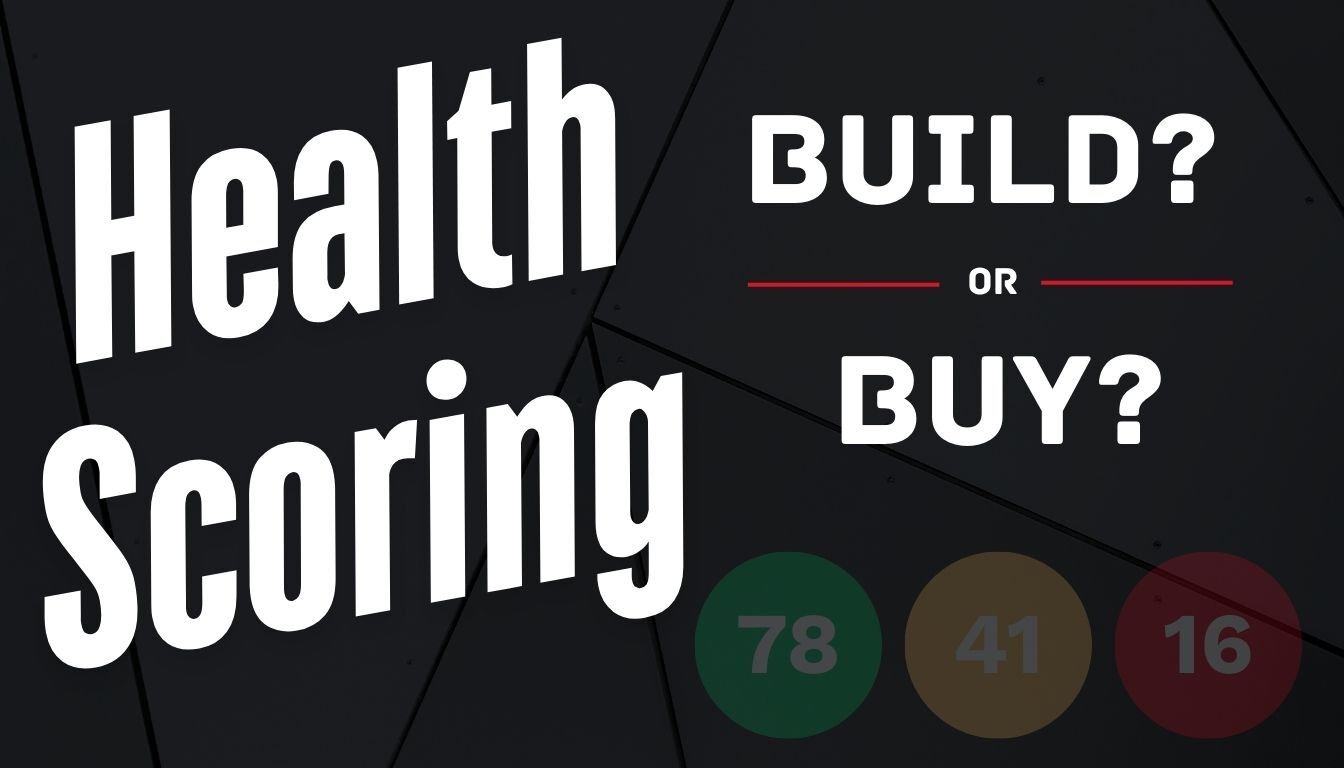Proven Strategies to Reduce Customer Churn in B2B SaaS
In the fast-paced world of B2B SaaS, keeping your customers is the difference between thriving and merely surviving. High churn rates can drain your...
5 min read
Brian Polackoff
:
Nov 30, 2024 3:07:04 PM

Understanding and addressing customer needs has become paramount for businesses aiming to cultivate loyalty and minimize churn through needs-based segmentation. Effective customer segmentation models are essential tools that enable organizations to categorize their customer base into distinct groups based on various characteristics, including demographics, behaviors, and preferences. By employing a tailored segmentation strategy, businesses can deliver personalized experiences that resonate with each specific customer segment, ultimately enhancing customer satisfaction and retention rates.
Customer segmentation is the process of dividing a customer base into distinct groups that exhibit similar characteristics or behaviors. This can involve demographic segmentation—categorizing customers based on age, gender, location, or income levels—or more nuanced approaches such as psychographic segmentation, which focuses on customers' values, interests, and lifestyles. Customer segmentation is often performed by the Customer Success Team. For more information on setting up a customer success team and strategy in your business read the article title Implementing Customer Success in SaaS Startups: Key Roles, Strategies, and Tools.
Understanding these different customer segments is crucial for businesses seeking to tailor their marketing strategies to meet specific customer needs effectively, as it allows for a more precise segmentation divides.

Implementing a customer segmentation model allows businesses to analyze customer data comprehensively. By recognizing patterns within different customer segments, organizations can develop targeted marketing campaigns that resonate with various groups. For instance, identifying loyal customers who consistently engage with a brand can prompt businesses to create personalized offers or loyalty programs aimed at retaining these valuable customers. Conversely, understanding the factors leading to churn among new customers can help develop strategies to address their specific needs, thereby minimizing turnover. To learn more about reducing customer churn head on over to the article title Unlocking Success: Top Strategies to Reduce SaaS Churn in the B2B Industry.
The benefits of customer segmentation are manifold. Firstly, it enhances customer experience by ensuring that marketing efforts are aligned with the preferences and expectations of different customer segments. This tailored approach leads to improved customer satisfaction and engagement, fostering greater customer loyalty and demonstrating the benefits of value-based segmentation. Secondly, businesses can streamline their marketing strategies, concentrating efforts on high-value segments and optimizing resources. Ultimately, the right customer segmentation strategy can lead to increased customer lifetime value, as organizations become adept at nurturing relationships with both loyal customers and potential new customers.
Demographic segmentation is one of the most common types of customer segmentation, focusing on quantifiable characteristics such as age, gender, income, education level, and family status. By leveraging demographic data, businesses can create customer segments that reflect their target customer base accurately, leading to more effective market segmentation strategies. For example, a company marketing children’s products might segment customers based on parents’ age and the number of children, showcasing a type of segmentation that effectively targets their audience. This enables focused marketing efforts that resonate with the specific needs and preferences of different demographic groups.
Behavioral segmentation involves analyzing customer actions and purchasing patterns. This type of customer segmentation focuses on aspects such as purchase frequency, brand interactions, and product usage, illustrating examples of customer segmentation. For instance, a retail company may identify customers who frequently buy certain products and target them with tailored promotions through email marketing. By understanding the behaviors that lead to purchases, businesses can craft marketing strategies that nurture these segments, ultimately reducing churn by meeting their ongoing needs effectively.
Psychographic segmentation delves into the values, beliefs, and interests of customers. This nuanced approach helps businesses understand the motives behind customer purchases. By segmenting customers based on their lifestyles and preferences, organizations can create marketing messages that resonate on a deeper emotional level. For example, a sustainable clothing brand might segment its target customer base according to environmental values, crafting campaigns that highlight eco-friendly practices, thereby fostering a loyal customer community.
Creating an effective customer segmentation strategy begins with identifying the appropriate models that align with specific business goals. Organizations should evaluate their customer data to ascertain which type of segmentation—demographic, behavioral, psychographic, or even a combination—will yield the most insightful segments. This process may also involve conducting customer surveys to gather qualitative data, allowing businesses to understand their customers’ needs from multiple perspectives.
Once the right customer segmentation models are identified, businesses should follow a structured approach to develop their segmentation strategy. Initially, data collection and analysis are crucial; organizations should leverage customer data to identify distinct segments. Next, companies should create detailed customer personas representing different customer segments, which will guide marketing efforts and product development, enhancing their segmentation divides. Finally, ongoing evaluation and refinement of the segmentation strategy are necessary to ensure it remains effective in the face of changing customer dynamics.
Customer segmentation can significantly enhance marketing campaigns by allowing businesses to target specific customer segments more effectively. Tailored marketing strategies that speak directly to the interests and needs of different segments lead to higher engagement rates and improved conversion rates. For instance, a company could develop loyalty programs specifically designed for its most valuable customers while offering discounts and incentives to attract new customers, illustrating firmographic segmentation. This targeted approach ensures that marketing resources are utilized efficiently, driving both customer acquisition and retention through effective segmentation groups.
An exemplary case in the retail industry involves a clothing retailer that implemented demographic segmentation to boost customer loyalty, demonstrating the impact of firmographic segmentation. By analyzing their customer base, they identified segments based on age groups and shopping behaviors, utilizing market segmentation techniques. Tailored marketing campaigns were created for each demographic segment, resulting in increased customer engagement and a significant reduction in churn rates. By providing personalized shopping experiences, such as curated collections for different age groups, the retailer successfully enhanced customer satisfaction and loyalty.
SaaS companies often utilize behavioral segmentation to analyze user interactions with their software platforms. For instance, a project management tool may segment users based on their frequency of use and features accessed, showcasing a type of segmentation that improves user experience. By identifying high-usage segments, the company can develop advanced tutorials and support services, thereby retaining these engaged customers. Conversely, for segments exhibiting lower engagement, targeted outreach campaigns can be employed to encourage usage, ultimately reducing churn through effective marketing team strategies.
The travel industry provides a compelling case study for geographic segmentation. A travel agency segmented its customer base by geographic location and travel preferences. By targeting specific regions with personalized travel packages and promotions, the agency effectively enhanced its marketing strategies, employing segmentation groups to better reach their audience. This approach not only attracted new customers but also catered to the unique needs of existing customers, fostering loyalty and retention across different geographic areas.
Customer segmentation analysis drives customer loyalty by enabling businesses to understand different customer segments and their specific needs. Through targeted segmentation, companies can design marketing strategies and loyalty programs that resonate deeply with customers, enhancing emotional connections and encouraging repeat business, a key aspect of needs-based segmentation. As a result, organizations can cultivate a loyal customer base, which is essential for long-term profitability and success. You can find other ways to improve customer loyalty by reviewing the article titled Guide: Measure Customer Loyalty in SaaS with Key Metrics & Strategies.
By implementing effective customer segmentation models, businesses can significantly improve the customer journey. Tailored marketing strategies that align with the preferences and behaviors of different customer segments can facilitate smoother interactions and more effective communication. This personalization enhances the overall customer experience, leading to higher satisfaction levels and a greater likelihood of repeat purchases.
Effective customer segmentation is instrumental in maximizing customer lifetime value (CLV). By identifying and nurturing high-value segments, businesses can optimize their marketing efforts and resource allocation, driving sustainable growth. Understanding the specific needs and behaviors of each segment allows organizations to create meaningful interactions that foster long-term relationships, ultimately contributing to an increase in overall customer lifetime value.
Churn Assassin's customer segmentation tool simplifies the process of building advanced segments while offering unmatched flexibility. With this tool, you can create segments using any property or field in the system, even leveraging existing segments to create "sub-segments" for granular insights. For instance, consider a scenario where you define a segment named "VIP Customers Paying More than $10,000/Year" based on annual revenue. From there, creating another segment to further categorize VIP customers by their timezone becomes seamless. This approach not only saves time but also ensures precision in targeting and analysis. By utilizing such intuitive and dynamic segmentation, businesses can better understand their customers' needs, implement personalized retention strategies, and proactively reduce churn. Ready to empower your business with smarter customer segmentation? Explore Churn Assassin today by viewing our rich feature set or checking out our pricing. If your ready to finally get ahead of churn start your free trial today by clicking on the button below.

In the fast-paced world of B2B SaaS, keeping your customers is the difference between thriving and merely surviving. High churn rates can drain your...

In B2B SaaS, understanding and proactively managing customer health is paramount to sustained growth and profitability. A robust customer health...

Implementing customer success in your SaaS startup is crucial for ensuring sustainable growth. In a competitive market, where customer experience is...